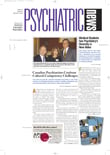American youngsters are not escaping the fattening of America, which is causing not just a major public health crisis, but a resizing of clothes, public seats, ambulances, and even coffins. In fact, childhood obesity is reaching epidemic proportions in all 50 states.
Thus Congress and the Centers for Disease Control and Prevention asked the Institute of Medicine to produce a report on the childhood obesity epidemic and how to counter it. That report has now been published.
The following are some of the findings and recommendations in the 461-page report, especially information on the psychological difficulties that overweight children experience and efforts to change their behaviors so that they will lose weight.
•
American children from lower socioeconomic strata, from the South, and from certain ethnic groups appear especially susceptible to obesity.
•
Results from studies of the emotional well-being of obese children are difficult to summarize given differences in subjects and outcome measures used, among other factors. Nonetheless, findings generally indicate a link between obesity and low self-esteem. However, such low self-esteem appears to be more prevalent among girls than among boys, and more common among Hispanic and white girls than among African-American ones.
•
Stigmatization of obese children appears to have increased over the past 40 years. Thus, there is a need to reduce negative attitudes toward overweight youth and the teasing that results.
•
Scientific efforts to reduce obesity among American youth have had varying results. For example, in one study cited in the report, the Child and Adolescent Trial for Cardiovascular Health, efforts were made to improve diet and increase physical exercise among children at 48 elementary schools and then to compare them with children at 48 elementary schools where such efforts were not made. Although the youngsters in the intervention schools ate less fat and exercised more than youngsters in the control schools, at the end of the study they did not weigh less than the latter.
In the Planet Health Trial, in contrast, 10 schools were randomized to classroom-intervention sessions or control sessions for a two-year period. Behaviors targeted for change in the intervention sessions included increased fruit and vegetable intake, increased physical activity, and decreased television viewing time. At the end of the study, obesity prevalence among girls in the five intervention schools was significantly less than among girls in the five control schools. (There was no significant difference in obesity prevalence between boys in the two schools.)
•
Efforts to prevent childhood obesity are getting under way in the United States. They range from state legislation regarding school physical education requirements and nutrition standards for beverages and foods sold in schools to new school-board policies and community initiatives to expand bike paths and improve recreational facilities.
The Institute of Medicine report also contains some compelling recommendations, notably:
•
The president should ask the secretary of the Department of Health and Human Services to convene a high-level task force to establish goals for countering childhood obesity.
•
Medical organizations should make childhood obesity prevention a high-priority goal. (For example, the report noted that the American Academy of Pediatrics has created a task force to deal with child obesity and is involved in a public-private partnership to counter excess weight, poor nutrition, and lack of physical activity among America's youth.)
•
There are currently no legal restrictions on the marketing of unhealthy foods to children. However, good evidence suggests that such restrictions could slash childhood obesity.
•
More research on the prevention of childhood obesity needs to be undertaken, especially research examining factors that might improve youngsters' dietary and physical behaviors.
A copy of the report, “Preventing Childhood Obesity: Health in the Balance,” can be purchased from the Institute of Medicine–National Academy of Sciences by calling (202) 334-3180. ▪
